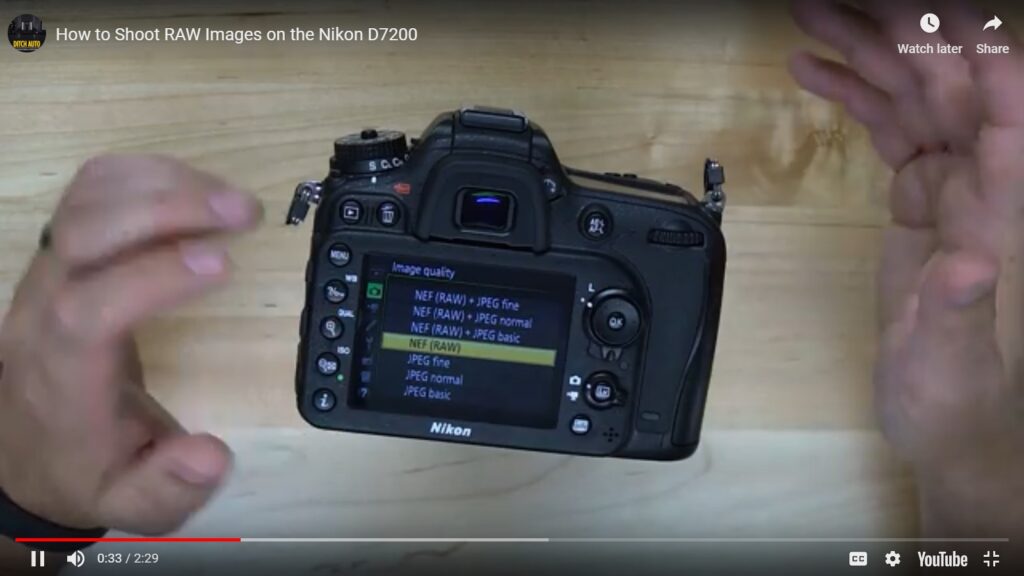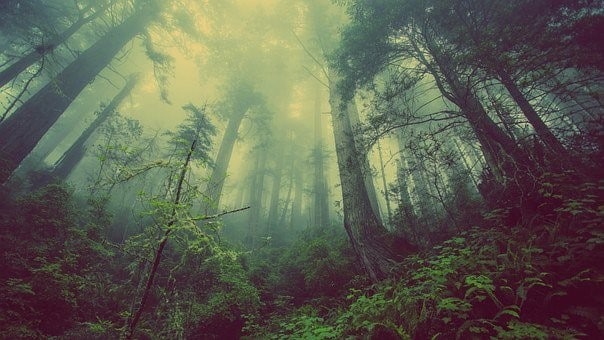When you purchase through links on our site, we may earn an affiliate commission. Here’s how it works.
Nikon D7200 landscape settings
Nikon D7200 is one of the best DSLRs that can capture impressive landscape photographs. This DSLR camera comes with a 24.2MP CMOS sensor with no optical low-pass filter, and, for the image processing engine, it is paired with the fast speed 4 processor.
The D7200 is capable enough to capture 100 JPEGs in a burst or 27 RAW files.
Another feature of this camera is it comes with a native ISO of 100-25600.
There is the availability of Hi BW1 and Hi BW2 expansion settings, which will let you expand your ISO up to an ISO 102400 (equivalent).
However, keep in mind that these two options are only available in JPEG mode and can produce monochrome images.
The Nikon D7200 comes with picture control 2.0, meaning the user will get to customize different picture controls that include an all-new flat mode, which will produce images with low contrast and maximum dynamic range.
For videographers, this camera offers full HD 1080p footage at 30/25p, and also, you can shoot at 60p/50p when using 1.3x crop mode. The D7200 includes both Wi-Fi and NFC (Near Field Communication).
Shooting landscapes with Nikon D7200
STEP 1. Shoot photographs in RAW format

NIKON D7200 landscape settings – raw format
Switching to RAW format is a simple task. But, you have to set your camera correctly for the perfect result.
The RAW file contains uncompressed, raw image data (unlike JEPG, which loses data), which can be edited for white balance or exposure using post-production software such as Adobe Photoshop.
Although keep in mind that RAW files are relatively large and heavy, so it’s better to carry extra memory cards.
STEP 2. Add a filter for enhancement
The filters are amazing. They give you an edge when capturing landscape photographs. Filterless photos may not bring a unique effect.
Filters are affordable accessories that can make big differences, and they should always be in your camera kit.
For example, a graduated neutral-density filter or graduated ND filter is an optical filter that has a variable light transmission.
Half of this filter is made of neutral density, which transits either gradually or abruptly, while the other half is clear. Hence, it is used for bringing an overly-bright part of the scene to the dynamic range of the sensor.
So landscape photographers use this filter to darken the over-bright sky resulting in accurate exposure of both the sky and the subject keeping all the details intact.
Or,
A polarizing filter is often used by photographers to manage reflections, suppress glares or darken the skies.
So, these filters come in a variety and are handy, especially for those who want to capture beautiful landscape photographs.
STEP 3. Invest in a TRIPOD and a good LENS
Investing in a tripod or Lens would be an excellent choice for capturing stunning landscape photographs. While a tripod eliminates camera (even if the shutter speed is fast) shaking, a good lens allows you to capture far-away objects with much clarity.
Speaking of lenses, you can choose from the following options.
- Nikon AF-S FX NIKKOR 200-500mm f/5.6E ED Vibration Reduction Zoom Lens with Auto Focus for Nikon DSLR Cameras. …
- Nikon D7200 24.2 MP Dual Zoom Lens Kit with 3.2″ LCD, Black. …
- Nikon AF S NIKKOR 85mm f/1.8G Fixed Lens with Auto Focus for Nikon DSLR Cameras.
Also, for shooting landscape photographs that show smooth waterfalls, rivers, waves, or dry ice texture, a slow shutter speed is needed, and for that, holding the camera with bare hands is not a good idea.
To take pictures involving slow shutter speed, you have to be very still. Otherwise, the image will end up getting very blurred.
However, by placing the camera on a tripod, You won’t experience any unwanted shakes or jerks.
STEP 4. Shoot from a different perspective
A change in position, tilting or panning makes a significant impact on the landscape image. Try using a wide-angle lens.
Landscape photographers mainly use it because these lenses give a greater depth of field to control and even allow using faster shutter speeds when taking photos.

Nikon D7200 landscape settings
With the Nikon D7200, you can become a master in shooting landscape photography and can capture some stunning landscape photographs.